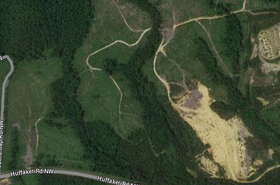The Environmental Protection Agency (EPA) has ramped up its investigation into toxic lead cabling, as revealed in an exclusive report by The Wall Street Journal last week.
As reported by the WSJ, the EPA has sent letters to telcos requesting to meet with the agency about their lead-sheathed phone cables.
It was the WSJ's investigation last year that accused US operators AT&T, Verizon, and other telecom companies of contaminating US water and soil with toxic lead cabling.
The EPA found more than 100 soil and sediment readings with lead above the regulator’s safety guideline for children at some phone lead-cable sites across three states.
As such, the EPA has determined that the investigation of the lead telecom cables is a "high priority" for the agency, according to Grant Cope, senior counselor to EPA Administrator Michael Regan. Both officials are helping oversee the EPA’s investigation.
“This is lead that could be concerning” based on factors like “exposure and pathways” into the body, said Clifford Villa, head of the EPA’s “Superfund” office that cleans up contaminated sites, in an interview with the Journal.
The EPA plans to collect more data for the investigation as it aims to determine whether the elevated lead levels it has found near the cables came directly from the lead cabling.
USTelecom stated in response that Verizon has worked with the EPA throughout the investigation, while AT&T said similar in a statement of its own.
Both telcos, along with other telecom companies with legacy lead cables, have said the cables pose no public health hazard and aren’t a major contributor to environmental lead.
According to the WSJ's report in July, the toxic lead can be found on telecom cables installed underwater, in the soil, and on poles. The investigation has found that as the lead degrades over time it is released into the water, soil, and air.
The investigation collected samples from various parts of the country where the lead could be found, including on the banks of the Mississippi River in Louisiana, the Detroit River in Michigan, the Willamette River in Oregon, and the Passaic River in New Jersey.
In total, the test samples from nearly 130 underwater-cable sites, conducted by several independent laboratories, were found to be toxic.
WSJ said that its investigation revealed a hidden source of contamination in more than 2,000 lead-covered cables that the companies or environmental regulators haven't addressed.
Following the report, US Senator Ed Markey wrote to the United States Telecom Association (USTelecom) demanding answers based on the report.
Cabling that was used decades ago
Although US mobile operators haven't used cabling containing lead since 1964, old cabling is typically left in place when legacy cabling is replaced with fiber, says WSJ.
The use of lead within US telecom cabling dates back even further, to the 1880s, initially starting as a way to sheath and protect copper wires from exposure to the elements because lead is very stable and does not rust.
At the time, lead was considered a state-of-the-art material and strong enough to guard the interior copper wires providing the critical communications infrastructure the public relied on. However, these lead-sheathed telecom cables would gradually be phased out from the 1950s.
US health agencies note that risks from the cabling include kidney issues, heart disease, and reproductive problems in adults. No amount of the metal is deemed safe, whether ingested or inhaled, particularly for children’s physical and mental development, according to doctors. Lead can stay in the blood for two or three months, but can be stored in organs and bones for decades.







